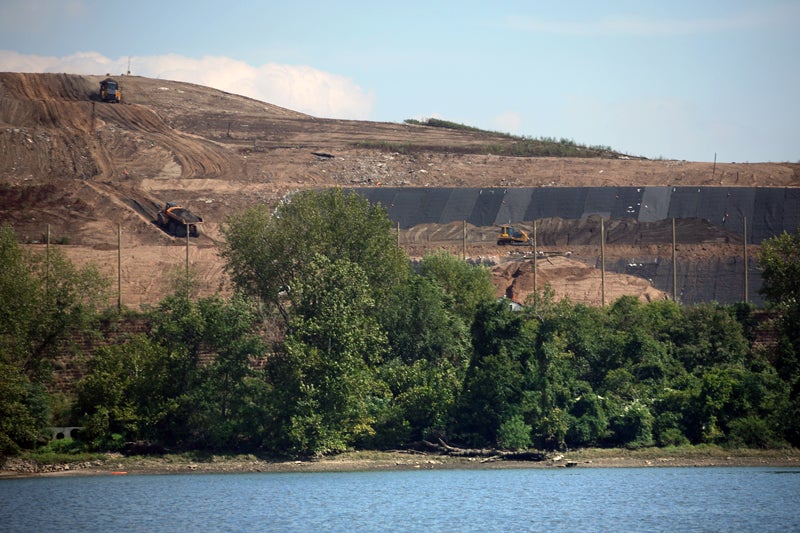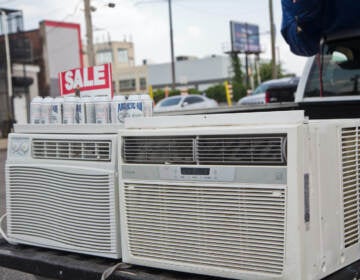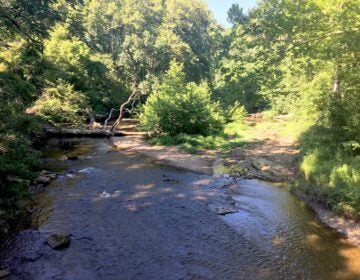A wake-up call on PCBs

Oct. 13
By Matt Golas
For PlanPhilly
Just about everyone in Philadelphia and its suburbs, South Jersey and Delaware knows they should be worrying about the health of our watersheds.
For good reason, just recall our deservedly proud moniker: Workshop of the World.
Remember when José Almiñana, a principal of Andropogon Associates, a Philadelphia landscape architecture firm recognized for its ecological planning and design, told PlanPhilly that 1 percent of the world’s water was all that was available for use? He said 97 percent of the water was too salty as part of the oceans and 2 percent was locked into glaciers. So it’s important not to pollute that 1 percent.
Still, the whole notion of actively making sure we keep our water clean, a core value no-brainer, really, seems to lie passively in our day-to-day decision making.
That out of sight, out of mindset problem is presently in the full focus of Delaware Riverkeeper Maya K. van Rossum. She is organizing a letter writing campaign directed at the Delaware River Basin Commission which is proposing new regulations regarding the presence of organic compounds called polychlorinated biphenyls in the Delaware River system. While the riverkeeper is pleased the agency (she is a member of its Toxics Advisory Committee) is taking action that would create one of the the toughest PCB standards in the nation, she believes the reform will not be stringent enough and she is encouraging the public to get intimately acquainted with the impact the chemicals can have on humans, farms animals and wildlife.
Coming up to speed on this issue is no easy task for the layman. You have to learn about the polluting agents, the methodology used by scientists in the effort to remediate stubborn carcinogenic chemicals from the environment, the logic that creates the rationale behind the positions industrial and municipal dischargers take on the proposed reform.
For instance, if you don’t know much about PCBs, take a gander at the U.S. Environmental Protection Agency website.
You will learn they are commonly used in: transformers and capacitors, oil used in motors and hydraulic systems, fluorescent light ballasts, cable insulation and thermal insulation material including fiberglass, felt, foam, and cork, adhesives and tapes, oil-based paint and floor finishes, plastics, caulk. The list goes on.
Then there is this factoid. Although the manufacture of PCBs was halted in 1979, today they are released into the environment at hazardous waste sites, through illegal dumping, during leaks from electrical transformers and other products that were improperly disposed into municipal or other landfills.
And … PCBs do not quickly break down and therefore may remain for long periods of time cycling between air, water, and soil. They build up in plants, crops as well as small organisms and fish.
The connection between fish in the Delaware and human contamination by PCBs is at the heart of van Rossum’s argument for tougher regulations.
“It is important that DRBC is strengthening its water quality criteria for PCBs so we can better prevent new PCB discharges into the River as well as better address the legacy of PCBs industry has burdened us with,” van Rossum told the DRBC on Oct. 8.
“But, we do not believe the DRBC is proposing a standard that is protective enough.
“The Delaware Estuary is already overburdened with PCBs, and as a result so are many species of fish. While having a uniform water quality criteria for the whole River system will make implementation simpler, it should not take priority over ensuring the greatest degree of protection for the public.
“Families who consume fish at a higher rate should not be sacrificed in order to preserve the ability of pollution dischargers to continue to discharge PCBs at a higher rate. According to DRBC, it is our African American, Cambodian and Vietnamese communities which reportedly consume fish at higher rates. Protection of these communities must be given higher priority than protection of pollution dischargers.”
For their part, the dischargers, entities like AMTRAK, DuPont and your local wastewater treatment facility, are worried that the DRBC is setting remediation standards that are so unrealistic the action will ultimately result in lawsuits and protracted legal wrangling.
An August 11 story in the Wilmington News Journal reported that Richard Schwer, a DuPont Co. official, said during a presentation that the DRBC’s idea to regulate PCB compliance over many decades could be impossible to enforce and might be open to legal challenges, since scientists cannot prove the stated goals can be achieved.
“Some 282,000 milligrams per liter of PCBs go into the river environment each day,” Schwer said, and “most come from toxic waste sites.” The DRBC plan requires a 98.8 percent reduction in that amount, with eventual allowances for only 379 milligrams per day per liter. “Dischargers will not accept permit limits which are not achievable or affordable,” Schwer said.
“Yes, they have held that out there the entire process,” van Rossum said. “Out of one side of their mouths they say they are very concerned and want to reduce PCBs, out of the other they say but give us quantified reductions we must achieve and we’ll sue you and will argue that the Delaware is already too polluted with PCBs to be eligible for this type of regulation.”
So there you have it. The bottom line rests in making this process as transparent and effective as possible. That starts with getting the public up to speed.
There’s plenty to read.
Written comments concerning the DRBC’s PCB proposal will be accepted through October 19. Following a review of all public comments, final action by the commissioners on the proposed rulemaking will likely occur at the DRBC’s December 9, 2009 business meeting.
Written comments should be mailed to Commission Secretary, DRBC, P.O. Box 7360, 25 State Police Drive, West Trenton, NJ 08628-0360, faxed to “Attn: Commission Secretary” at (609) 883-9522, or emailed to paula.schmitt@drbc.state.nj.us. All written comments must be received by 5 p.m. on October 19, 2009, and should include the name, address, and affiliation (if any) of the commenter, along with “PCB Rulemaking” in the subject line.
ON THE WEB:
Delaware River Basin Commission proposal
Environmental Protection Agency’s PCB Homepage
Delaware Riverkeeper’s Call to Action
Delaware Riverkeeper’s testimony concerning DRBC watershed remediation proposal
DuPont Co. Sustainability Homepage
Contact the reporter at mgolas@design.upenn.edu
WHYY is your source for fact-based, in-depth journalism and information. As a nonprofit organization, we rely on financial support from readers like you. Please give today.






